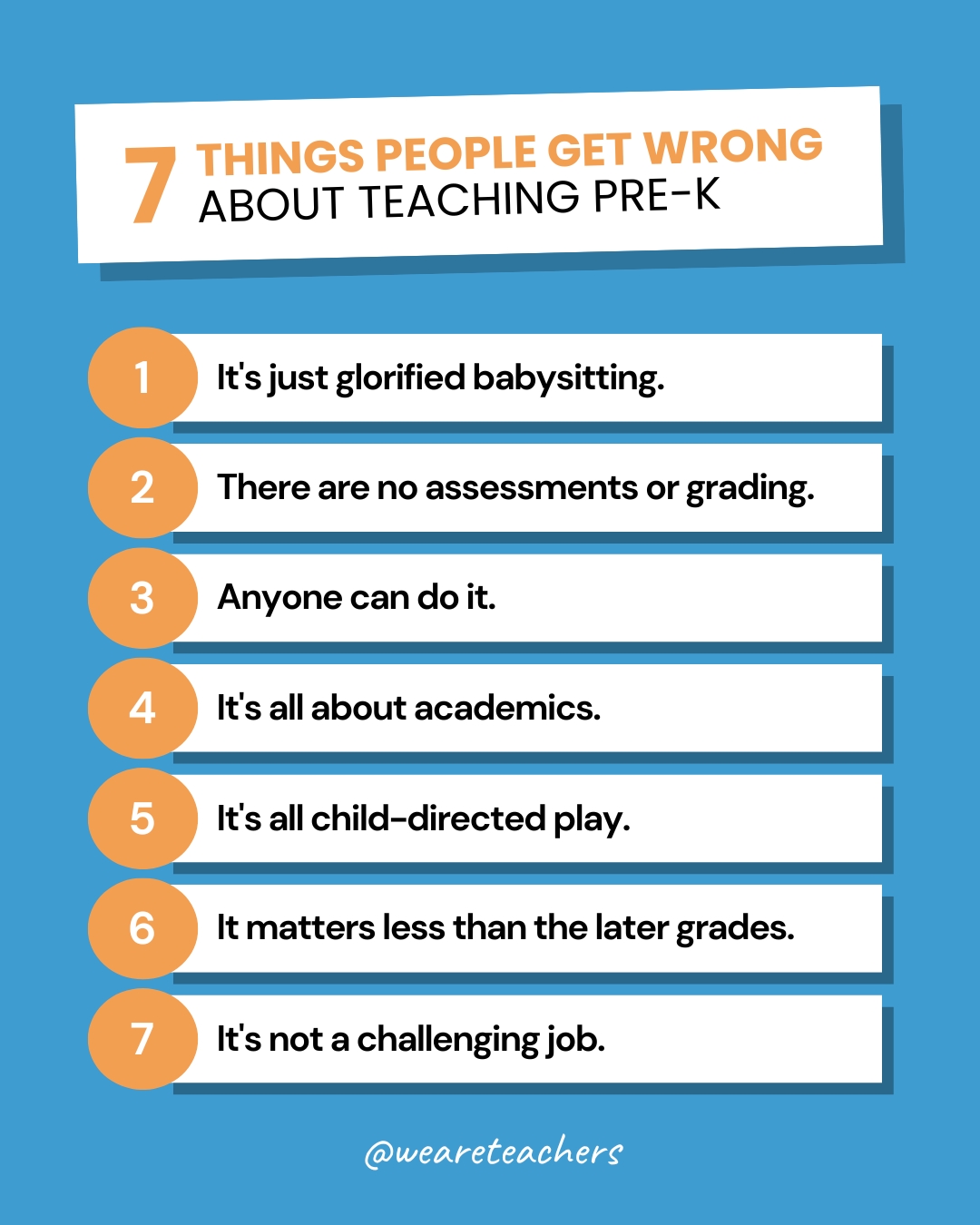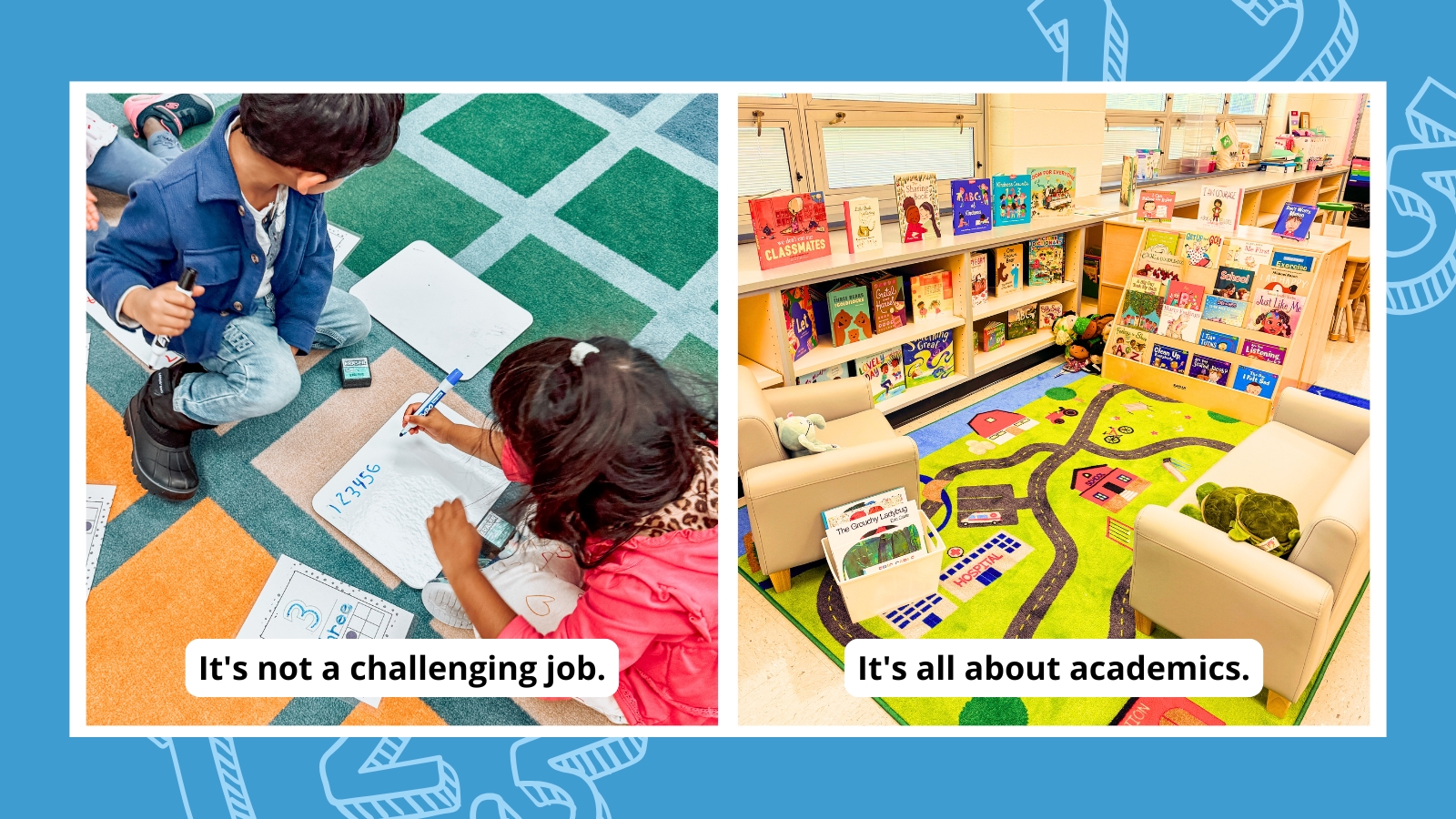When I tell people that I teach pre-kindergarten, I receive some pretty standard responses. Wide-eyed stares, followed by “Wow, I could never do that” and “It must be fun to just play all day” are just a couple of examples. And still others say things like “Isn’t that the same as daycare?”
As an early childhood teacher for 10 years, I can confidently tell you that many people simply do not understand what pre-kindergarten teachers actually do. Here are seven things people tend to get very wrong about teaching pre-K.
1. It’s just glorified babysitting
Teaching pre-K involves much more than just supervising children. Pre-kindergarten teachers are licensed educators with expertise in child development and early learning. Running an effective pre-K classroom includes providing a structured learning environment that fosters cognitive, language, and motor skills and social-emotional development. Pre-K teachers are masters at altering the environment and varying teaching techniques to meet the needs of young learners, while simultaneously supervising everyone for safety.
2. There are no assessments or “grading”
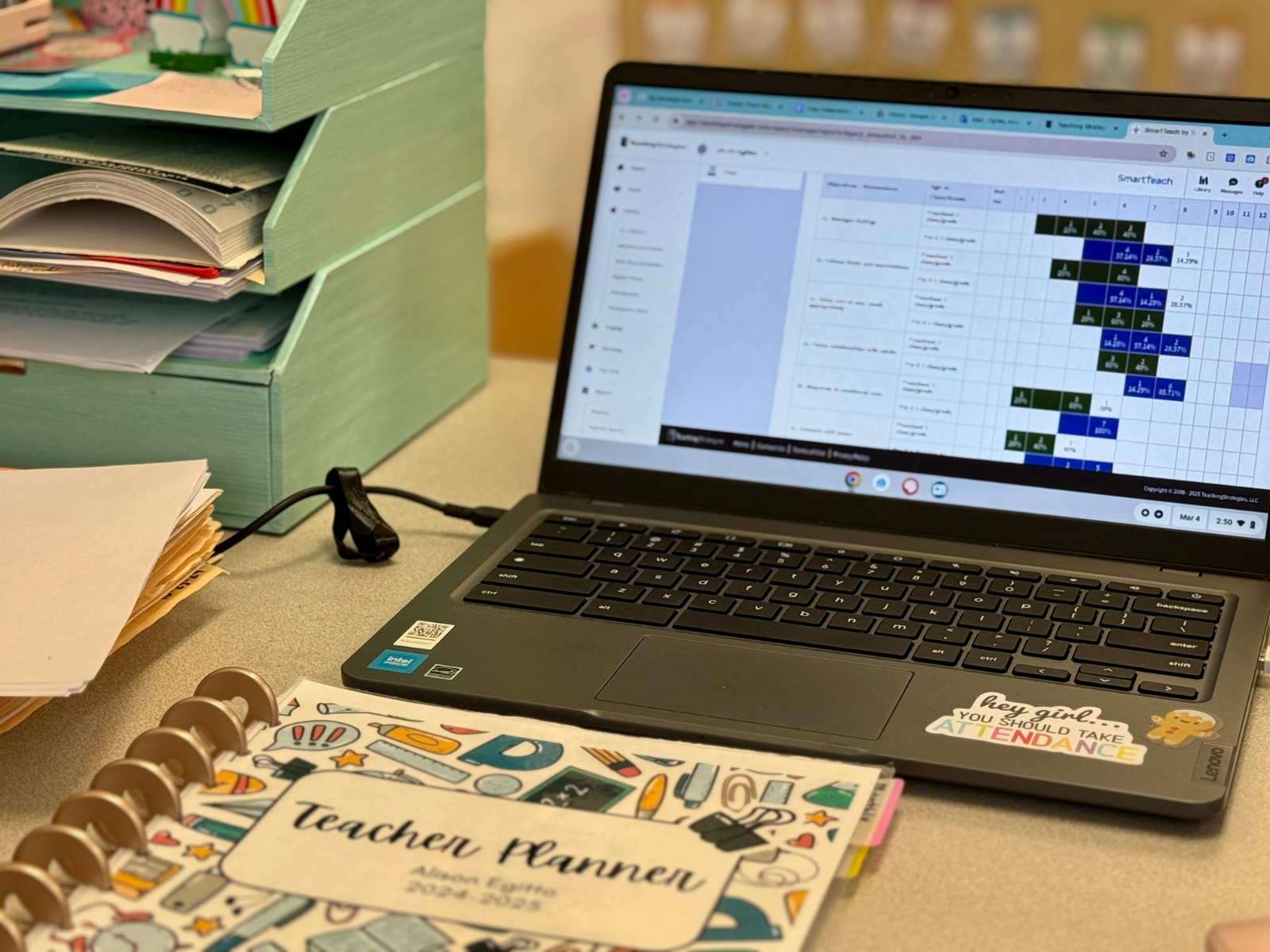
Pre-K teachers are educators who plan and implement age-appropriate curriculum, teach basic self-help skills, and assess children’s progress. In my own state, pre-K teachers utilize ongoing assessments with all children to monitor their progress in important early learning skills. Children are continually assessed in pre-academic, social, communication, motor, and self-help skills. Formative assessments are happening while managing tiny bodies with big emotions during their first-ever school experience. Pre-K teachers then analyze classroom data, collaborate with any special education providers, and report children’s learning progress to parents.
3. Anyone can do it
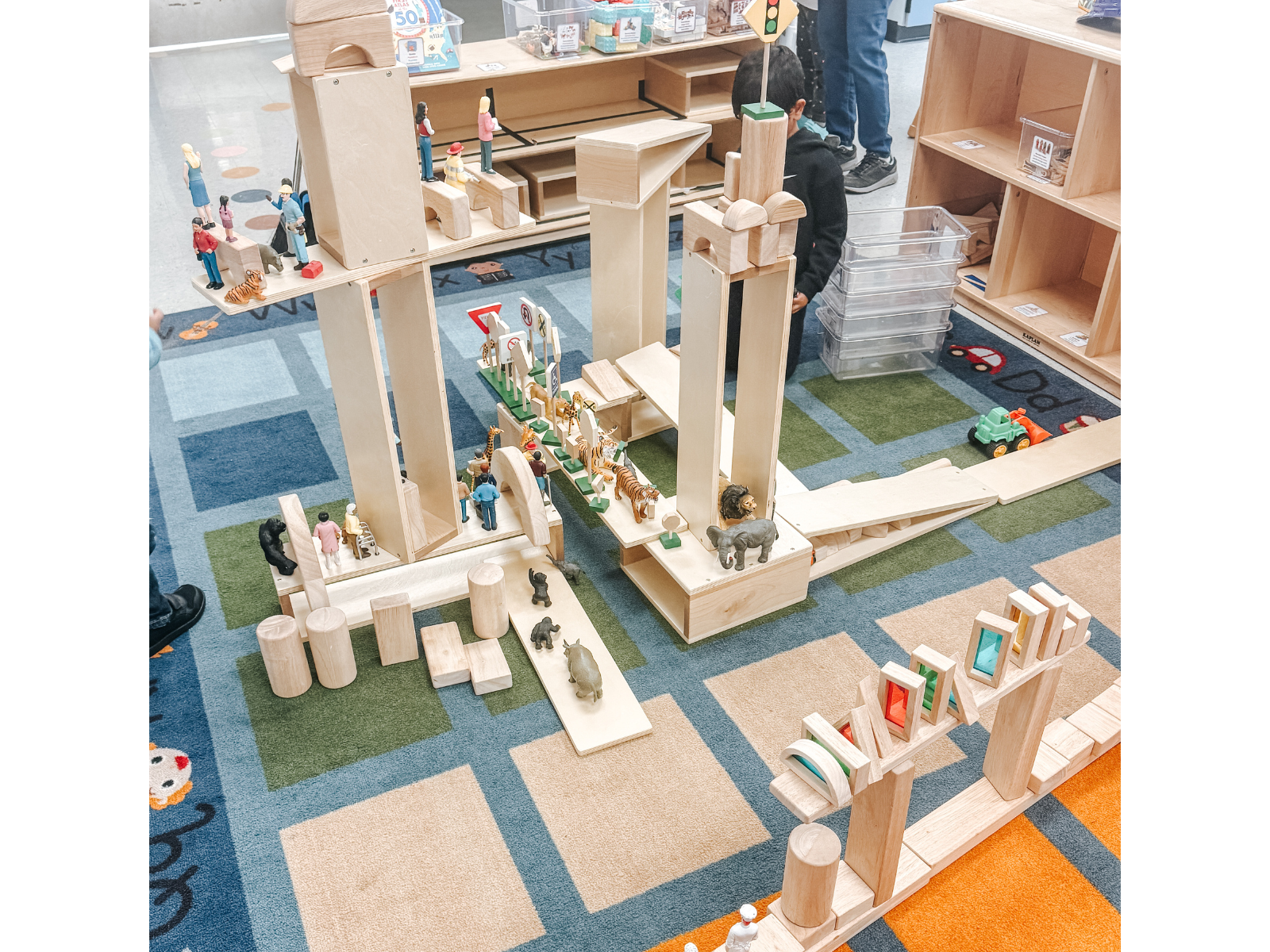
Teaching pre-kindergarten requires specialized training in early childhood education and development. Play-based learning techniques and child development research are at the forefront of a good pre-K teacher’s mind. It’s a profession that demands a deep understanding of child development and positive early learning techniques. Pre-K teachers set the stage for all future grades and walk with parents and students through their very first formal schooling experience.
Beyond the usual demands of teaching, there are also many guidelines that exist because the children are so young. For example, in many states, all certified pre-K teachers must attend recess daily for the full duration as well as eat lunch alongside their students. Besides all that, the day-to-day life in a pre-K classroom can be pretty overstimulating. Similar to parenting young children, teaching kids who are 3 to 5 years old can be a lot to take in at once. Tantrums and potty accidents need attention, along with opening snacks and assisting parents who are often new to the school experience. At the end of the day, being someone’s very first teacher, for a whole classroom of children, is not for the faint of heart.
4. It’s all about academics
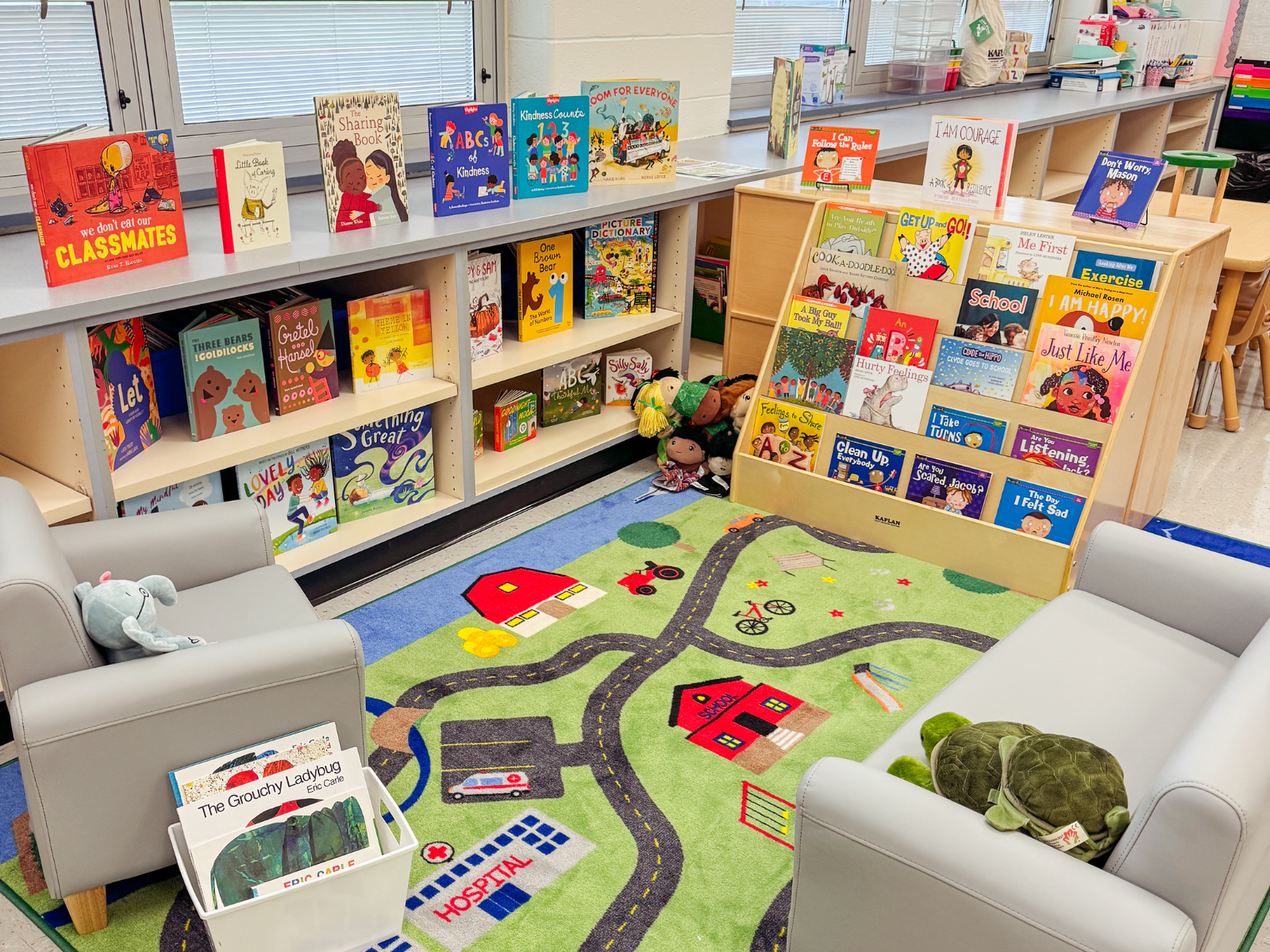
It’s true that pre-kindergarten does introduce early literacy and numeracy concepts. But it also focuses on social skills, emotional regulation, communication skills, and physical development. Children are given the opportunity to participate in early learning activities geared toward growing skills in multiple areas. Teachers facilitate play and small-group learning to help children build important kindergarten-readiness skills.
The teacher is not the only one helping children grow. The physical classroom environment and peers teach children many new skills in independence as well. Pre-K teachers carefully arrange their classroom environment to invite the curiosity and collaboration of young children.
5. It’s all child-directed play
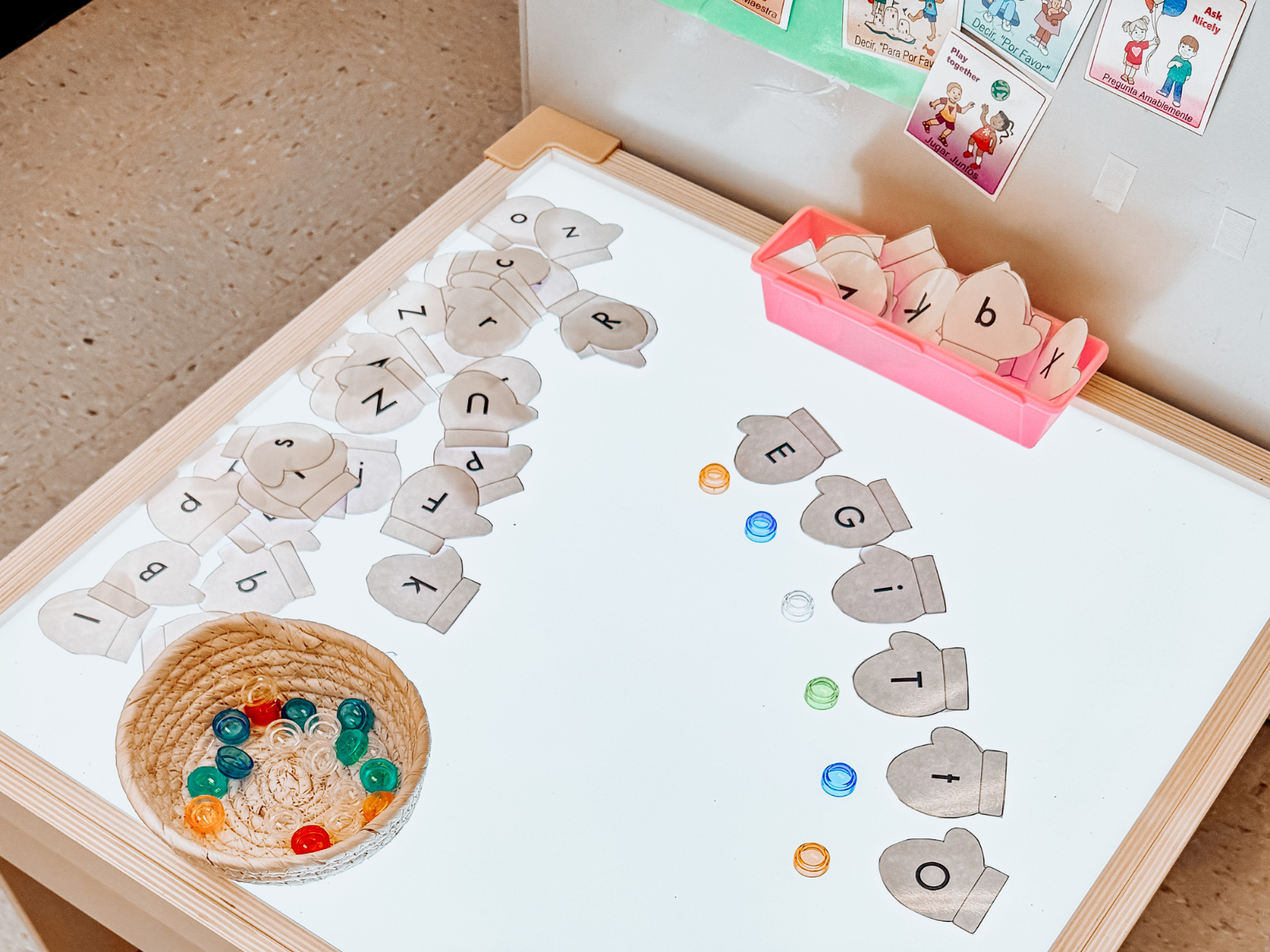
Every good pre-K teacher knows that child-led play is an integral part of pre-kindergarten education. It helps children explore, experiment, and develop problem-solving skills. Early childhood research proves the importance of play-based learning, but pre-kindergarten teaches children fundamental student behaviors as well. Young children learn to follow a routine, to wait for their turn, and to attempt basic-care tasks for themselves. In this educator’s opinion, a well-rounded pre-K program provides both play opportunities and structured learning that is developmentally appropriate.
6. It matters less than the later grades
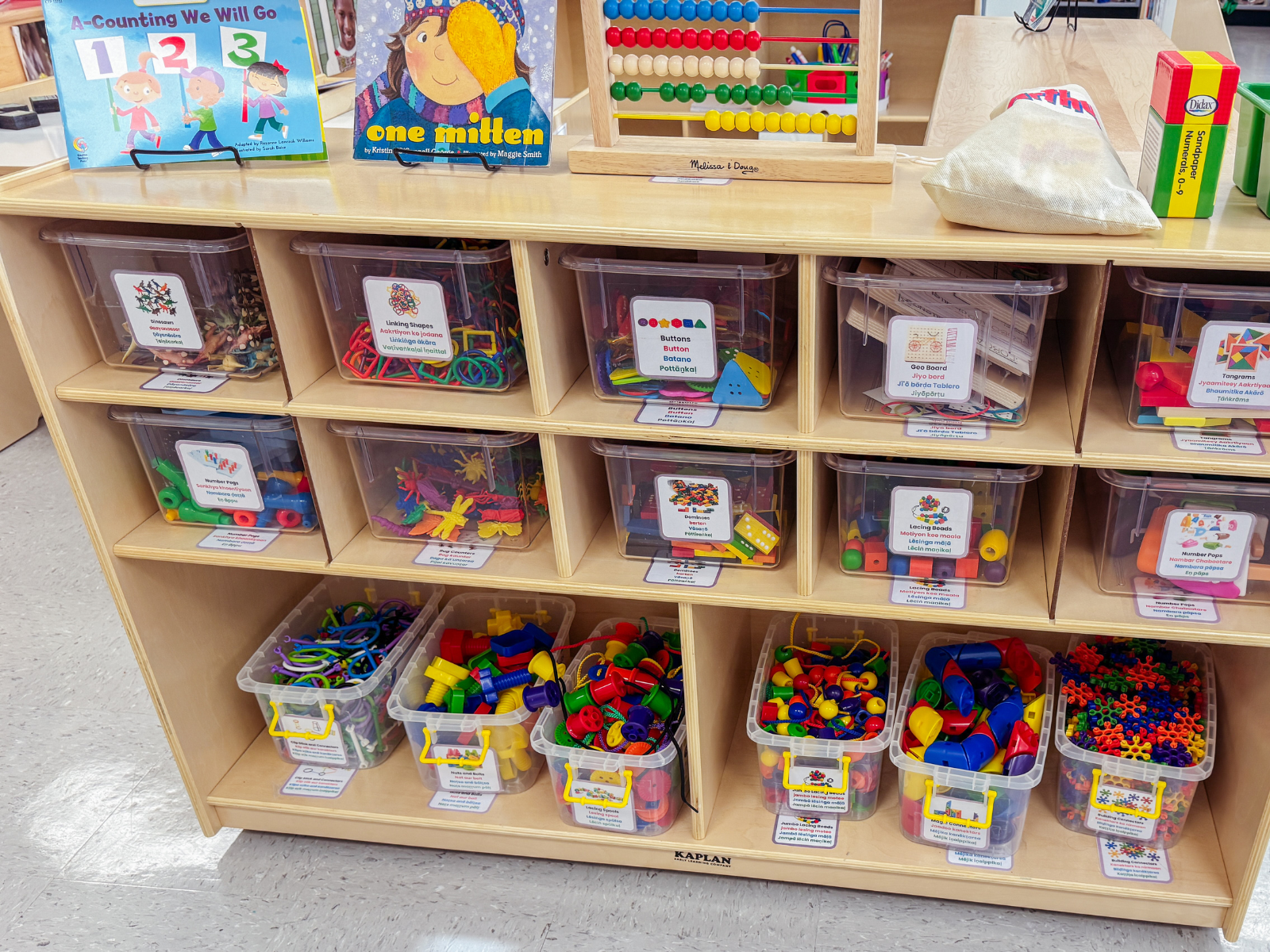
Early education sets the foundation for a child’s future learning. Effective pre-K experiences can have a lasting impact on a child’s academic and social development. Early childhood research tells us that a child’s brain grows the most that it ever will between birth and 5 years old, which means quality early childhood programs are crucial to supporting our future citizens. Researchers have directly correlated quality pre-kindergarten experiences with positive outcomes that last through adulthood. An MIT news article about the lasting effects of preschool states, “Attending preschool at age 4 makes children significantly more likely to go to college, according to an empirical study led by an MIT economist.” The research is clear: Quality pre-K makes a lasting impact on K-12 education and beyond.
7. It’s not a challenging job
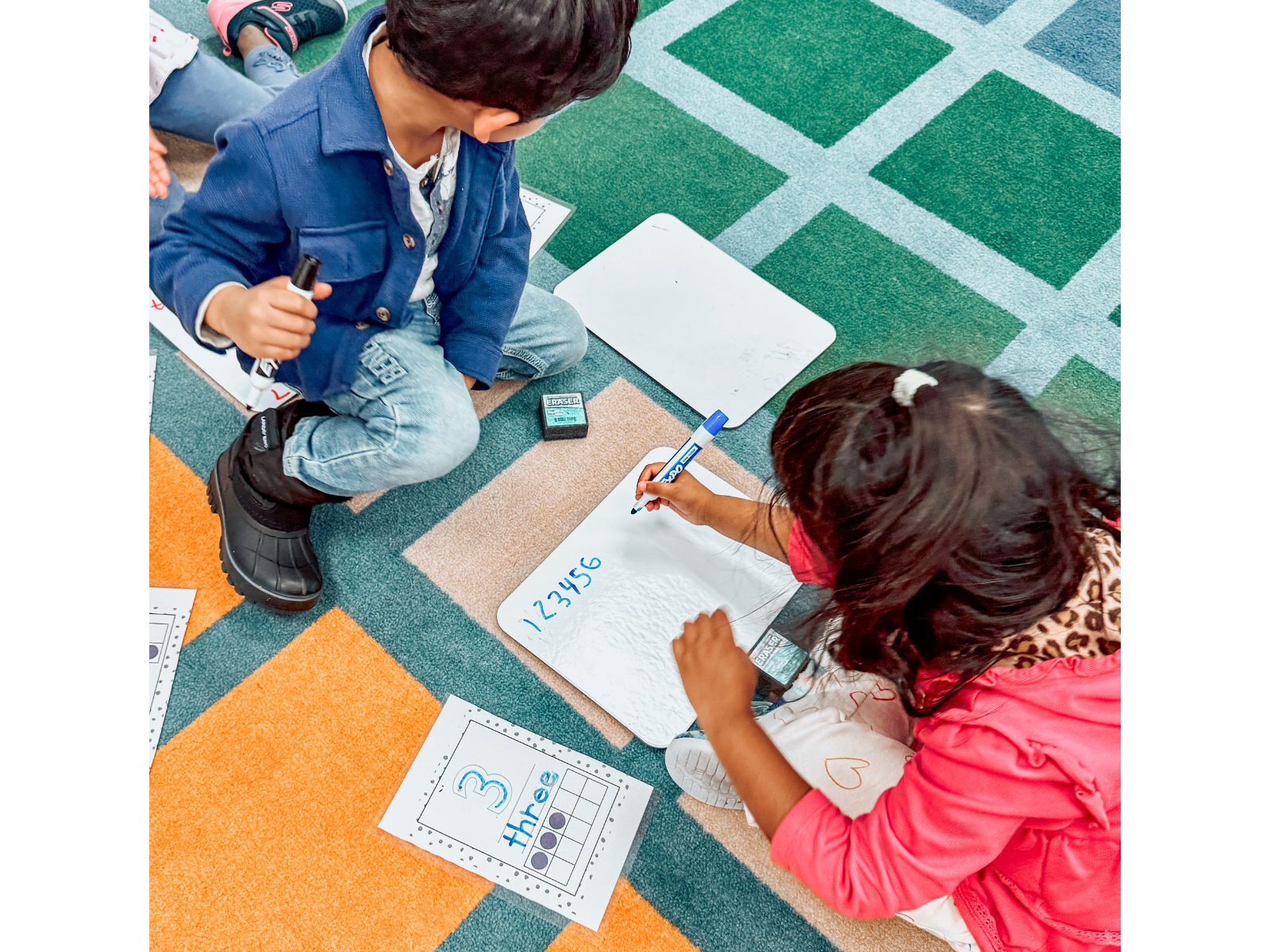
While teaching the youngest learners in the district, pre-K teachers must differentiate instruction, manage behaviors, create a nurturing classroom environment, and adhere to many early childhood–specific regulations. In many states, lawmakers do not fund pre-K the same way they fund K-12 education. That means pre-K teachers often have more professional evaluations with stakeholders inside and outside the school district as well. In a typical year, pre-K teachers can be evaluated two to five times by different people for different reasons. Someone with a clipboard comes to evaluate pre-K teachers on things like the classroom environment, teaching techniques, and child interactions. It can be quite nerve-wracking as a teacher to maintain a calm classroom environment and pass all the evaluations, all while making sure everyone makes it to the potty on time.
Understanding the things people get wrong about teaching pre-K helps validate the vital role pre-kindergarten teachers play in shaping a child’s educational journey. Pre-K teachers are not babysitters or superheroes, they are respected educators who have dedicated their careers to laying the educational foundation young children will carry with them all the way into adulthood.
What would you add to the list of misconceptions about teaching pre-K? Come and share in the We Are Teachers Helpline group on Facebook!
Plus, get all the latest teaching tips and ideas when you sign up for our free newsletters!
